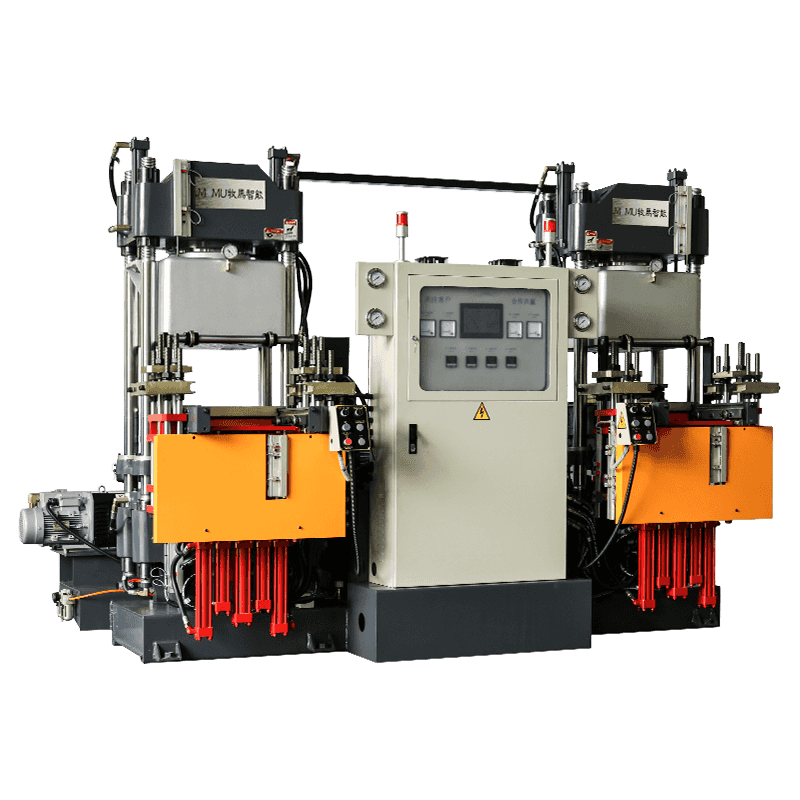Rubber injection molding machines have become a critical part of the manufacturing process for producing high-quality rubber products with precision and efficiency. These machines allow manufacturers to create complex rubber components used in various industries, including automotive, medical, electronics, and consumer goods.
A rubber injection molding machine typically consists of three main parts: the injection unit, the clamping unit, and the mold.
The injection unit is responsible for feeding and heating the rubber material before it is injected into the mold. Rubber pellets or granules are loaded into a hopper, from which they are fed into a barrel. The barrel contains a screw that rotates to melt and mix the rubber. The molten rubber is then injected into the mold cavity through an injection nozzle under high pressure.
The clamping unit holds the mold in place during the injection and curing process. It ensures that the mold halves are tightly sealed to prevent leakage of the rubber material. The clamping unit provides the necessary force to hold the mold together during the injection cycle, ensuring that the molded part is formed with the correct shape and dimensions.
The mold is the custom-designed cavity that gives the rubber part its shape. Molds are typically made from steel or aluminum and are designed with specific features such as vents, cooling channels, and ejection mechanisms to facilitate the molding process. After the injection, the mold is cooled to allow the rubber to solidify before it is ejected.
![]()
Rubber injection molding machines are used in a wide range of industries due to their ability to produce high-precision, high-quality rubber components. Some of the key applications include:
In the automotive sector, rubber injection molding machines are used to produce parts such as gaskets, seals, vibration dampers, hoses, and rubber bushings. These parts play a vital role in enhancing vehicle performance, safety, and comfort. The ability to produce complex geometries with high precision makes injection molding ideal for automotive rubber components.
Rubber injection molding is also widely used in the medical industry to produce components such as seals, gaskets, diaphragms, and various medical device parts. The process ensures that medical rubber products meet stringent standards for safety, biocompatibility, and reliability. Silicone rubber is particularly popular in medical applications due to its flexibility, chemical resistance, and sterilization capabilities.
Rubber products such as kitchen utensils, electrical gaskets, toys, and sports equipment are often manufactured using rubber injection molding machines. The ability to produce durable, flexible, and cost-effective rubber components makes injection molding a preferred method for producing consumer goods.
The electronics industry uses rubber injection molding for components like seals, connectors, and gaskets that protect sensitive electronic devices from moisture and dust. The precision and consistency of injection molding ensure that these rubber components fit tightly and provide effective protection.
Rubber parts used in industrial equipment, such as seals, O-rings, and vibration isolators, are often produced with rubber injection molding machines. These components are essential for maintaining the efficiency and longevity of industrial machinery by reducing wear, tear, and vibration.
One of the most significant advantages of rubber injection molding is its ability to produce parts with tight tolerances and consistent quality. The automated nature of the process ensures that each part is identical, reducing the risk of defects and the need for manual labor.
Rubber injection molding allows for the creation of complex shapes and designs that would be difficult or impossible to achieve with traditional molding methods. This capability is especially beneficial when producing intricate components or parts with multiple features.
Rubber injection molding is a fast and efficient process that reduces cycle times, allowing for high-volume production. This efficiency helps manufacturers meet the demands of industries that require large quantities of rubber components within short timeframes.
Rubber injection molding machines can process a wide range of rubber materials, each with unique properties. This versatility allows manufacturers to tailor the properties of the finished part to meet specific application requirements, such as heat resistance, flexibility, or chemical resistance.
The rubber injection molding process generates minimal waste compared to other molding techniques. The material is injected directly into the mold cavity, and excess material can often be reused, making it an environmentally friendly option.
Selecting the right rubber injection molding machine depends on several factors, including the type of rubber material being used, the size and complexity of the parts being produced, and the required production volume. Here are some key considerations:
Choose a machine with the appropriate size and clamping force for the parts you intend to produce. A machine that is too small may not provide enough force to mold large parts, while a machine that is too large may be inefficient for smaller, less complex components.
Consider the specific features required for your molding process, such as multi-shot molding, high-precision injection, or fast cooling. Some machines offer additional features like automated part ejection, temperature control, and mold cooling to optimize the production process.
Ensure that the rubber injection molding machine is compatible with the specific rubber materials you plan to use. Some machines are designed for specific types of rubber, such as silicone, EPDM, or natural rubber, so it's essential to match the machine with the material’s processing requirements.
Many modern rubber injection molding machines come equipped with advanced automation and control systems that improve efficiency, reduce labor costs, and ensure consistent quality. Features such as robotic arms, in-mold labeling, and real-time monitoring can enhance the overall production process.





